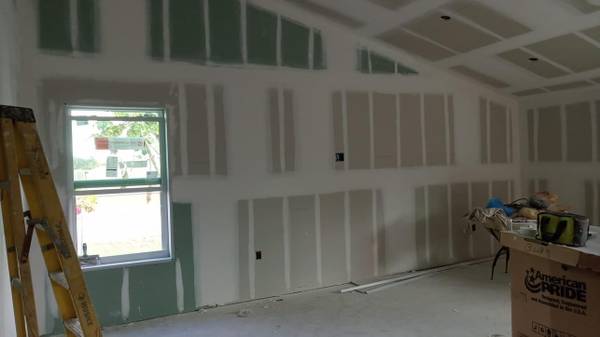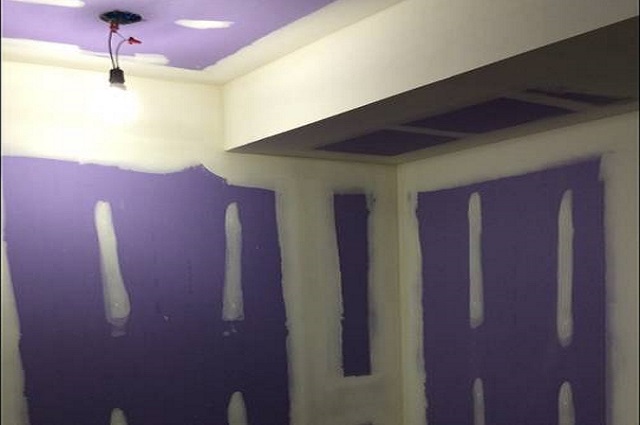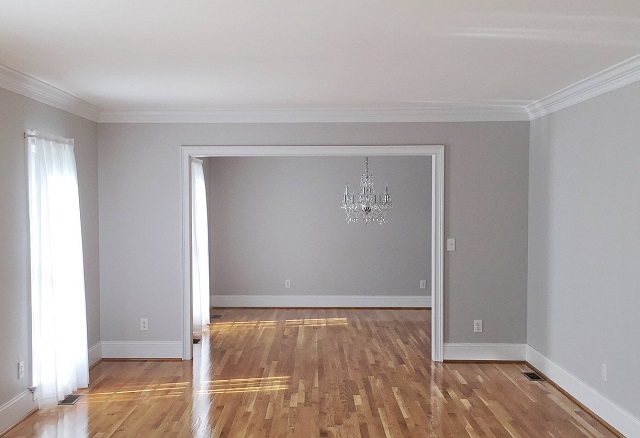Table of Contents
Why Seam Blending is Important in Drywall finishing
Drywall finishing is a crucial phase in any construction or renovation project, providing a smooth, uniform surface that forms the canvas for the final aesthetic touches. Achieving seamless seam blending plays a pivotal role in elevating the overall appearance of the project. When seams are not properly blended, they can be noticeable even after applying joint compound, detracting from the professional finish desired in drywall finishing.
Seam blending is essential for creating a cohesive and polished look across the drywall surface. Inadequately blended seams can result in visible lines or ridges that disrupt the smoothness of the wall or ceiling. Without meticulous attention to seam blending, even the most expertly executed drywall installation can fall short of the flawless finish that defines professional-quality drywall finishing.
Common Challenges in Achieving Seamless Drywall Seam Blending
Achieving seamless drywall seam blending can pose several challenges during the drywall taping process. One common issue that professionals encounter is improper joint compound application, which can lead to visible ridges and uneven texture along the seams. Inadequate feathering out of the seams is another challenge, resulting in noticeable transitions between the joint compound and the surrounding drywall surface.
Additionally, mismatched drying times of the joint compound layers can create difficulties in achieving a uniform surface finish. This can lead to uneven blending and require additional sanding and reapplication of joint compound, prolonging the drywall finishing process. Inconsistent pressure when applying the joint compound can also result in variations in thickness and texture, making it challenging to achieve a seamless transition between the seams and the rest of the drywall surface.
Choosing the Right Drywall Joint Compound for Seam Blending
When it comes to achieving seamless drywall seam blending, selecting the appropriate joint compound is crucial. The chosen joint compound plays a significant role in the overall quality and durability of the drywall finishing. It is essential to opt for a high-quality joint compound that is specifically designed for seamless blending to ensure a professional and long-lasting result.
One key factor to consider when choosing the right drywall joint compound for seam blending is the drying time. Quick-drying joint compounds are ideal for projects that require fast completion, while slower-drying options give you more time to work with the material before it sets. Additionally, look for joint compounds that are easy to sand and provide excellent adhesion to the drywall surface. By selecting a suitable joint compound for seam blending, you can enhance the overall finish and durability of your drywall project.
• Quick-drying joint compounds are ideal for fast completion
• Slower-drying options provide more time to work with the material
• Look for compounds that are easy to sand and offer good adhesion
• Choosing the right joint compound enhances finish and durability of drywall project
Proper Preparation Techniques for Seamless Drywall Seam Blending
Before jumping into the application of joint compound for seamless drywall seam blending, it is crucial to ensure that the surface is prepped adequately. Begin by inspecting the drywall seams for any gaps, cracks, or uneven spots that may affect the blending process. Use a putty knife to remove any loose debris or old joint compound, creating a clean and smooth substrate for the new application.\
Next, it is essential to apply a liberal coat of drywall primer over the seams to promote better adhesion of the joint compound. Allow the primer to dry completely before proceeding with the joint compound application. This step helps in enhancing the bond between the joint compound and the drywall surface, resulting in a more durable and professional-looking finish.
Tips for Applying Joint Compound to Achieve Seamless Seam Blending
When applying joint compound for drywall finishing, it is crucial to start with a clean and smooth surface. Make sure to remove any dust or debris before beginning the application process. Additionally, consider using a wider drywall knife for the initial coat to achieve a more even coverage. This will help in reducing the amount of sanding required later on, leading to a smoother finish.
Furthermore, when layering joint compound for seam blending, remember to feather out the edges to create a seamless transition between the compound and the drywall. Take your time and apply thin layers, allowing each coat to dry fully before adding the next one. This method helps in building up the compound gradually and ensures a uniform surface for paint application.
The Importance of Sanding in Achieving Smooth Drywall Seam Blending
Achieving smooth drywall seams is a crucial step in the drywall finishing process. Sanding plays a pivotal role in ensuring that the joints between the drywall panels are seamless and blend seamlessly into the surrounding wall. Without proper sanding, even the most expertly applied joint compound may result in visible lines and imperfections, detracting from the overall appearance of the walls. Sanding helps to refine the surface, smoothing out any rough patches and inconsistencies to create a uniform and professional finish.
Proper sanding technique is essential for achieving a flawless end result in drywall finishing. It is important to use the right grit sandpaper and to sand in a consistent manner to avoid creating uneven patches or visible scratches on the surface. Sanding also helps to feather out the edges of the joint compound, ensuring a seamless transition between the patched areas and the rest of the wall. By taking the time to sand meticulously and attentively, you can achieve a smooth and flawless surface that is ready for priming and painting.
Techniques for Feathering Out Seams for Seamless Blending

When it comes to achieving seamless blending in drywall finishing, mastering the art of feathering out seams is crucial. Feathering out seams involves the gradual tapering of joint compound to create a smooth transition between the patched area and the surrounding surface. This technique helps in seamlessly blending the repaired area with the rest of the wall or ceiling, creating a professional and polished finish. By feathering out the seams effectively, you can ensure that there are no visible ridges or bumps that could detract from the overall appearance of the drywall surface.
To feather out seams for seamless blending in drywall finishing, start by applying a thin layer of joint compound over the joint or repair area using a wide taping knife. Gradually increase the pressure on the knife as you move away from the center of the repair to feather out the edges. Feathering out the joint compound in multiple thin layers, allowing each layer to dry before applying the next, can help achieve a seamless transition. This gradual build-up of joint compound ensures that the repaired area blends smoothly into the surrounding drywall, resulting in a flawless finish that is indistinguishable from the rest of the surface.
How to Properly Prime and Paint Drywall Seams for Seamless Blending
To achieve a seamless finish in drywall seams blending, proper priming and painting are crucial steps in the process. Before priming, ensure the joint compound has dried completely according to the manufacturer’s instructions, typically allowing ample time for drying is necessary. Use a high-quality primer suitable for drywall finishing to even out the surface texture and promote better paint adhesion. This step helps create a uniform base for the paint application, enhancing the overall appearance of the finished wall. When choosing paint for seamless blending, opt for a durable and washable paint that matches the existing wall color for a cohesive look.
When it comes to painting drywall seams for seamless blending, apply the paint with consistent strokes in the same direction to maintain a uniform finish. Start by cutting in along the edges and corners with a brush before using a roller for the larger surface areas. It’s important to allow each coat of paint to dry completely before applying additional layers to avoid uneven texture or color variations. Be mindful of the paint’s sheen level, as different finishes can affect the final appearance of the wall. A thorough and meticulous approach to priming and painting drywall seams is essential for achieving a professional-looking finish that seamlessly blends into the surrounding walls.
Troubleshooting Common Issues in Drywall Seam Blending
When troubleshooting issues in drywall seam blending, it’s essential to address common problems such as visible lines, bubbling, or cracking in the joint compound. One frequent challenge is uneven application of the compound, leading to inconsistencies in the surface texture. To rectify this, ensure to feather out the edges of the compound smoothly and blend it seamlessly with the surrounding area. Additionally, inadequate drying time between coats can result in a patchy finish, so allowing each layer to dry completely before adding the next is crucial for optimal drywall finishing.
Another issue that may arise during drywall seam blending is the formation of air bubbles or blisters in the joint compound. This can happen due to trapped air, improper mixing of the compound, or applying it too thickly in one go. To troubleshoot this problem, gently press down on the affected area to release the air and then carefully blend it back into the surrounding surface. Moreover, ensuring that the joint compound is mixed thoroughly to a smooth consistency before application can help prevent bubbling or blistering in the drywall finishing process.
Final Steps for Achieving Professional-Looking Seamless Drywall Seam Blending
Once the joint compound has dried and the seams are sanded smooth, the final steps in achieving professional-looking seamless drywall seam blending involve priming and painting. Properly priming the drywall not only seals the surface but also helps the paint adhere better, resulting in a more even finish. Choose a high-quality primer specifically designed for drywall finishing to achieve optimal results. Once the primer has dried, apply a coat of paint in your desired color, ensuring even coverage over the seams for a seamless transition between the patched areas and the rest of the wall. Allow the paint to dry completely before inspecting the final finish.
To ensure a truly seamless blend, it is essential to pay attention to detail during the priming and painting process. Check the finished surface under different lighting conditions to identify any imperfections that may need touch-ups. Use a high-quality brush or roller to apply the paint evenly, being mindful of achieving a consistent texture across the entire wall. Take your time during this final stage of the drywall finishing process to achieve a professional-looking result that seamlessly integrates the patched areas with the rest of the wall.


